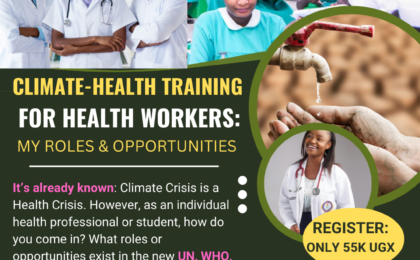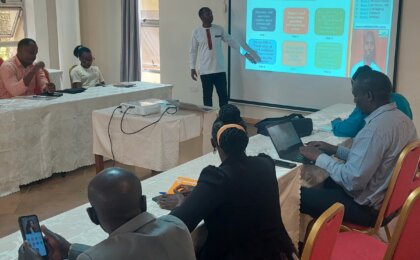What is Albinism? How Common is it? Who Can Get it? And How? See this!
In the Albinism awareness article, I hinted on the need to understand what albinism is before one can be a good advocate for people with albinism. Well, let us go to the beginnings. What is albinism?
What is Albinism?

In a simple sentence, albinism is a condition whereby one is born without or with less melanin in skin or hair or eyes or all. Some author at KidsHealth says it is ‘an inherited condition that leads to someone having very light skin, hair, and eyes’. Indeed, the most common and easily identifiable feature is the light skin (which some call ‘white’). It is of many types, but the most common one is oculocutaneous albinism (OCA), specifically version 1 (OCA1) and 2 (OCA2).
In this simple definition, we have noted some things: 1. It is an inherited condition (meaning, it is passed on from parents to children, not through spiritual powers, but DNA or ‘blood’); 2. The condition is about low production or no melanin in the newborn’s skin, eyes or hair or all; 3. The lack of or little melanin means the skin will be light or ‘white’ as some like to say; 4. Affects skin, hair, and eyes (not the brain or any other organ!). Clear? Well, let us move on.
What causes Albinism? Who can Get it?

The cause is genetical. Both parents must be having the recessive Albinism gene to be able to produce someone with Albinism. Even then, chances are just 1/4 (25%) that they will produce someone with Albinism. That is how rare it can be.
In other words, a couple with albinism or carrying the gene (though with no symptoms of the condition) will likely never give birth to a child with albinism. Why? Because, the chance of producing someone with albinism when both parents have the condition or the genes is just 25 out of 100 or 1/4 or 25%. 75% chances are that the child will have no albinism!
Maybe that’s why most people ignorantly regard people with albinism as rare humans with unusual or supernatural abilities. People usually fear and misjudge what they don’t know or rarely see! Otherwise, in reality, no big deal. They are humans, just like everyone else!
People with Albinism (PWA) have no hidden or unknown issues and powers. This is important to know.
Who can get albinism?

That aside, anyone can produce a child with albinism. Ask me and Winnie! It is possible that albinism genes can be carried through a numberless family generations without ever showing up, until one day in a family generation X when it shows up.
That is how it happened with us. I asked along our family tree, and there was no history of albinism. Winnie did the same. And yet here we were, with Josiah (a newborn with albinism, lol).
How Common is Albinism?

As you must have already noted, the condition is rare. However, it is more common in some regions more than others. For example, while only 1 in 18,000 or 20,000 can get the condition in USA, the number shoots up when it comes to Africa, to about 1 in just 5,000 up to 1 in 15,000 (The Lancet). In Uganda, the prevalence of albinism is high, at 1 in every 5,000 or even 1 in just 2,000. According to some records, there must be more than 5,000 persons with albinism in Uganda.
There is a general belief that Eastern Uganda has more PWA than any other region. However, I personally think it is because the region has strong advocacy initiatives for PWA, making most of them come out and get seen and shown. Various celebrations and events regarding PWA in the East, especially in Jinja town where SNUPA has done great work with Albinism makes the world see them more in Jinja, the Eastern Uganda, than anywhere else in Uganda.
Anyway, the point must be home. Albinism is rare, and yet so common. Take it as you get it! It can be rare in numbers, but we can make it common and normal by advocating for rights and social integration of PWA. That means providing for their needs, empowering them for work, social life, and daily endeavors.

Summary: People with albinism simply have little or no melanin in their skin, hair or eyes or all. As such, their skin is light. Albinism, though rare, can happen with any family at any time. People with albinism are fully functional at all levels, and have no supernatural powers or anything that other humans don’t have. They simply have little or no melanin.
Important: Due to little or no melanin in the eyes, they may need regular eye check-ups, eye aids for better vision, including glasses, or be allowed to sit in front in class or have their books or reading materials’ font size enlarged for better learning. They need sun protection in form of long-sleeved clothes, hats, sunscreen lotion, etc. We will have further discussions regarding how best to empower PWA for self reliance.

Do you wanna join us for people with albinism? Visit www.miklahlife.com/albinism and explore the very many ways you could get involved. Thank you.




Geoff Walker
June 20, 2022This is so well written, thank you for the great effort and sharing of it!!
#togetherwecan
#raisingawareness
Vicent Nemeyimana
June 24, 2022Thanks for reading through this. I appreciate.
Ndagije fred
June 21, 2022Very nice artical keep it up dear musawoo!🙏🙏🙏🙏
Vicent Nemeyimana
June 24, 2022Thank you for reading through, Fred. Thank you